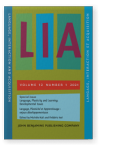Adaptive functions of neurobehavioral plasticity in language learning and processing
A life span perspective
This article presents a large scope of issues on early and late language plasticity that increase our understanding of the neurobehavioral dynamics of change, the main property of the learning brain. In their pioneering work, Bates and Kuhl have convincingly demonstrated that plasticity is intrinsic to development. Bates has provided new data on the impressive recovery of language in children with focal brain injury, highlighting that both hemispheres support the early phases of this change, contrary to previous assumptions. The fundamental reorganization of the early phonemic system around the age of 8 months proposed by Kuhl, combining neural commitment and social abilities, has powerful cascading effects for subsequent word learning. Our developmental crosslinguistic research on online sentence processing in monolinguals and simultaneous bilinguals has revealed distinctive linguistic patterns of “cue cost”, a multifactorial concept relevant for capturing the microplasticity of the processing system. Whatever the language, the shift around the age of 9 towards the canonical adult pattern indicates an efficient adaptive processing occurring with a small delay in bilinguals. Most salient, from childhood, bilinguals exhibit specific cue cost patterns with interactions. In older French adults, cue cost variability is mediated by processing speed which preserves online syntactic abilities but reveals plasticity limits in Alzheimer’s patients.
Article outline
- 1.Introduction
- 2.Some issues in early plasticity
- 2.1The impressive recovery of language in children with perinatal focal brain injury
- 2.2The cognitive domain and differential functional plasticity: ‘Gradients of plasticity’
- 3.The infant born to learn
- 3.1Organization and reorganization of the perceptual system
- 3.2Early speech learning plasticity: The intrinsic link between ‘native neural commitment’ and ‘social gating’
- 4.Some research on microplasticity: Online sentence processing in a crosslinguistic perspective
- 4.1Language processing and the Competition Model
- 4.2Hierarchy of cue cost factors: Dynamics of developmental shifts in monolinguals
- 4.3Simultaneous bilinguals: Specific developmental patterns of cue cost and adaptive shifts
- 5.Late neurobehavioral adaptive plasticity: Language and the aging brain
- 5.1Mechanisms of successful cognitive aging: Compensation, selection, maintenance
- 5.2Microplasticity in the elderly: Sentence processing as an adaptive process
- 5.3Towards the limits of plasticity: Preliminary results on French Alzheimer’s patients
- 6.Concluding remarks
- Acknowledgements
- Notes
-
References
